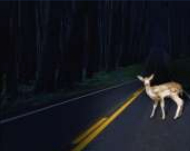Precaution
At times of the year, the days grow shorter, and nights become longer, meaning you and your teen will likely be driving more frequently in the dark. Night driving poses considerably higher risks compared to daytime driving, with traffic fatality rates being three times higher at night. This heightened risk is primarily due to limited visibility for both you and fellow drivers. As the sun sets, depth perception, color recognition, speed judgment, and peripheral vision are all impaired, making nighttime driving more hazardous.
What can you do?
Here are a few suggestions to make night driving safer:
- Reduce your speed and increase following distance. The reduced visibility at night means you’ll have less time to react. By decreasing your speed and maintaining a larger gap between your vehicle and the one in front of you, you provide yourself with extra time to respond to unexpected situations.
- Turn on your low beam headlights. Even at dusk, low beams help others see you better.
- Use high beams when it is safe and legal. Be sure to lower them as you approach oncoming traffic or when following another vehicle. If you happen to approach an oncoming vehicle with its high beams on, direct your eyes to the right edge of the road to avoid being blinded.
- Make sure your windows are clean. Film buildup may be unnoticed during the day, but at night or in late afternoon sunlight, this film can substantially diminish your ability to see.
- Dim your dash lights. This reduces glare within your vehicle.
- Avoid smoking when you drive. Smoke’s nicotine and carbon monoxide hamper night vision.
- Proactively scan the driving environment for impaired drivers. At night you are far more likely to encounter drivers impaired by drugs, alcohol or fatigue so be on the lookout.
